South Africa is home to ten per cent of the world’s flowering plants so it is no surprise that much of this abundance has found its way into our gardens. Among the lesser-known gems from the country are tulbaghias: elegant, airy flowers that resemble small agapanthus, usually with sweetly scented flowers and pungent foliage. Tulbaghias are long-flowering and floriferous, qualities that are winning them enthusiasts among both gardeners and plant breeders.
Jump to
What are Tulbaghias?
Found only in southern Africa, the genus consists of about 22 species but only a few are currently widely grown in gardens. The most popular is Tulbaghia violacea, which has grass-like foliage typical of tulbaghias that smells strongly of garlic when it is crushed. The flowers form a pinkish-mauve umbel with individual flowers consisting of a ring of six tepals around a raised crown that resembles a miniature daffodil. Most reference books and nursery catalogues suggest that its common name is ‘society garlic’. The epithet may have been used long ago, but it is probably no longer current: I have certainly never heard it.
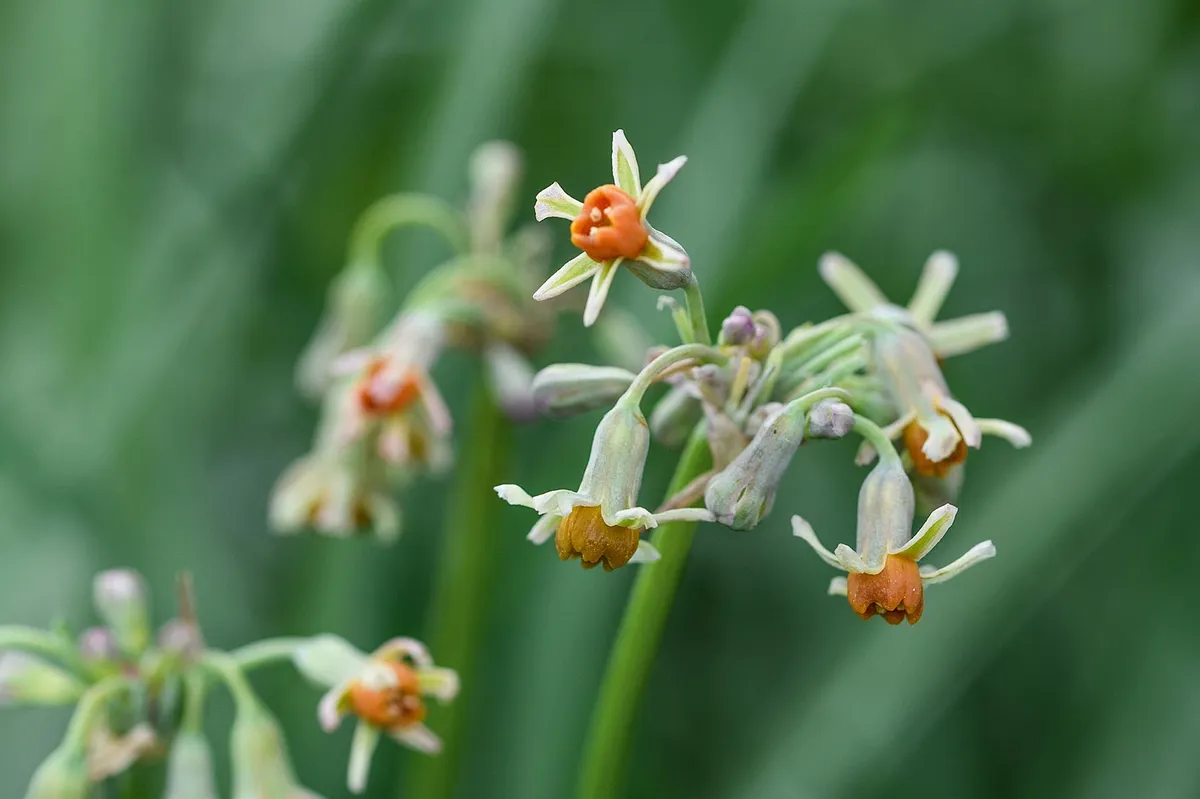
How to grow Tulbaghia
Where to plant Tulbaghia
The first requirement for tulbaghias to thrive is sunshine, and plenty of it. Plants will grow in partial shade but will produce far fewer flowers. In mild areas of the country, where the temperature does not drop below about -5°C, tulbaghias can be grown in the garden as long as the soil is free-draining. They will tolerate periods of drought but to flower well they need moisture during the flowering season, which for most forms is from May to September.
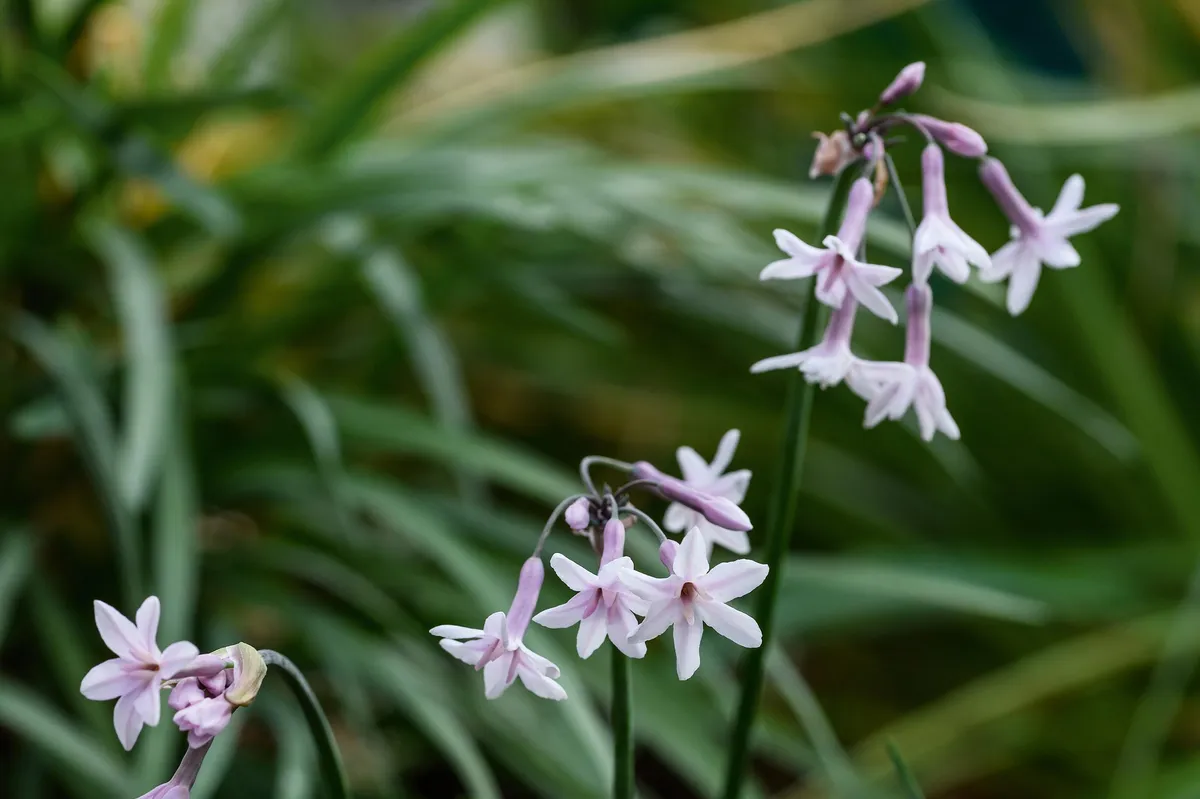
How to care for Tulbaghia in winter
National Collection holder Steve Hickman recommends that if tulbaghias are grown in the garden their leaves should be cut to about 3cm above ground level in mid-November and the whole plant covered with a 6cm-deep mulch. In coastal areas that are free from frost this probably won’t be necessary. Those of us in the rest of the country will need to grow our tulbaghias in pots and store them during the winter away from frosts in a greenhouse or cold frame. A mixture of about a third each of loam, compost or leaf mould and horticultural grit is ideal. Make sure that the pots are regularly watered when the plant is in flower. An occasional feed with a high-potash fertiliser (the sort used for feeding tomatoes) will keep tulbaghias flowering. The only other regular attention the plant needs is to remove the stems of dead flowers.
How to divide Tulbaghia
To keep them vigorous and flowering well, all plants, whether grown in the ground or in pots, will need splitting every three or four years. Dig up the entire plant and pull apart the fleshy roots, replanting the pieces immediately so that they do not dry out.
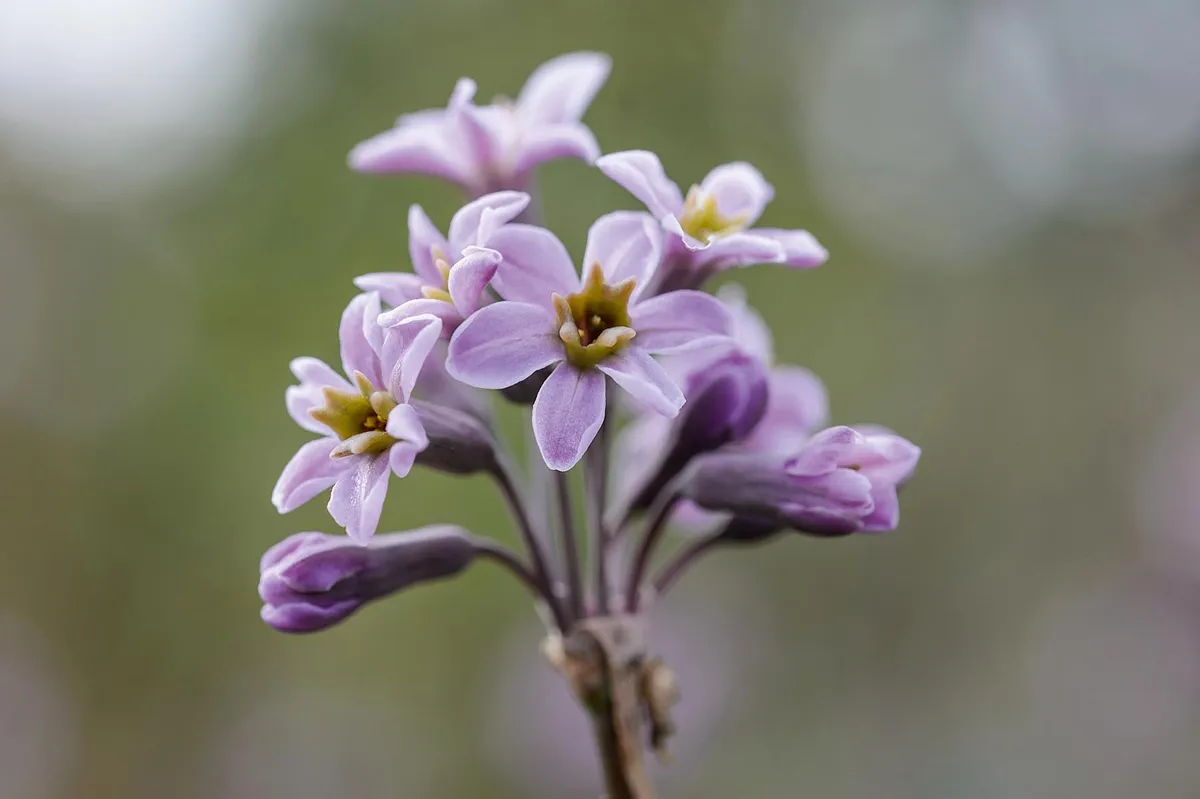
Propagating Tulbaghia
Tulbaghias can also be easily propagated from seed. The hard, black seeds are best sown in spring in deep pots. Young plants will flower in their second or third year. Tulbaghias are long-lasting as cut flowers and just a few blooms in a vase will scent a room.
The best Tulbaghia for your garden
Tulbaghia violacea
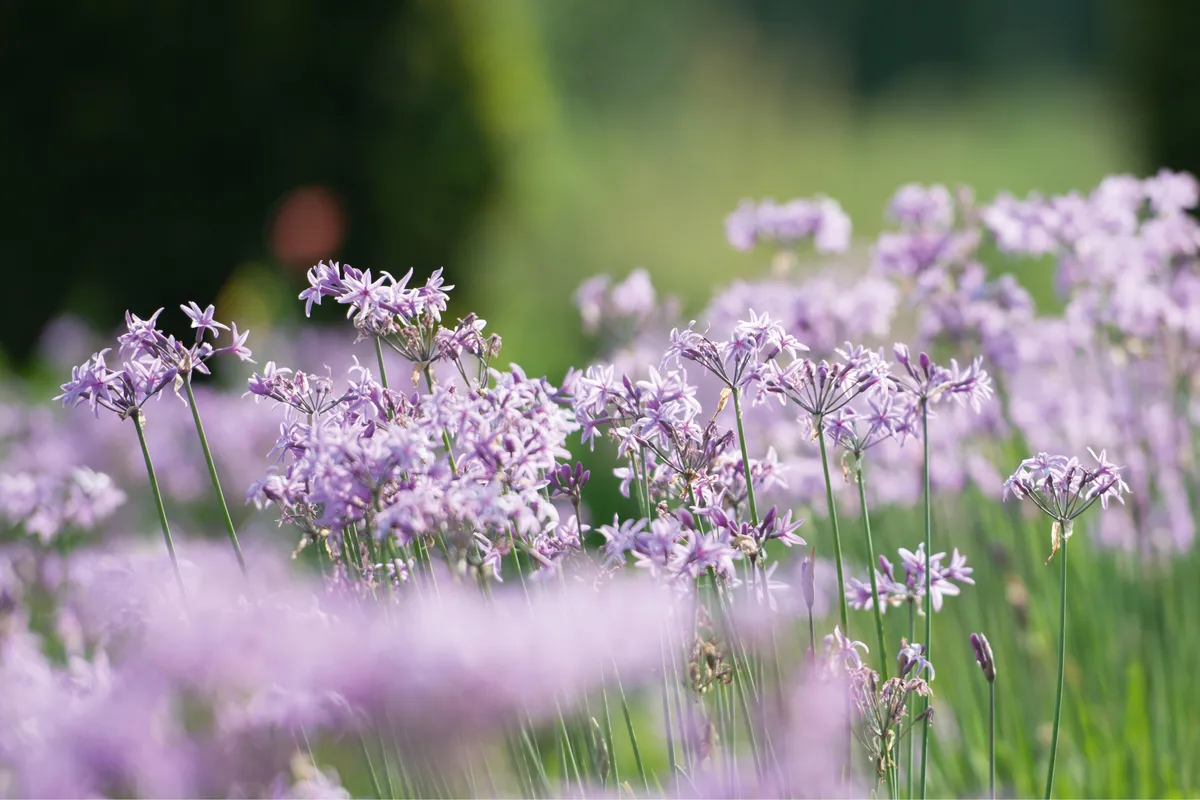
The most widely cultivated member of the family with flowerheads made up of up to 20 pale, pinkish-mauve flowers. This is a vigorous species that produces masses of sweetly scented flowers between June and September. The foliage is narrow and grass-like. 40cm. AGM*. RHS H3, USDA 7a-10b†.
Tulbaghia violacea ‘Pearl’
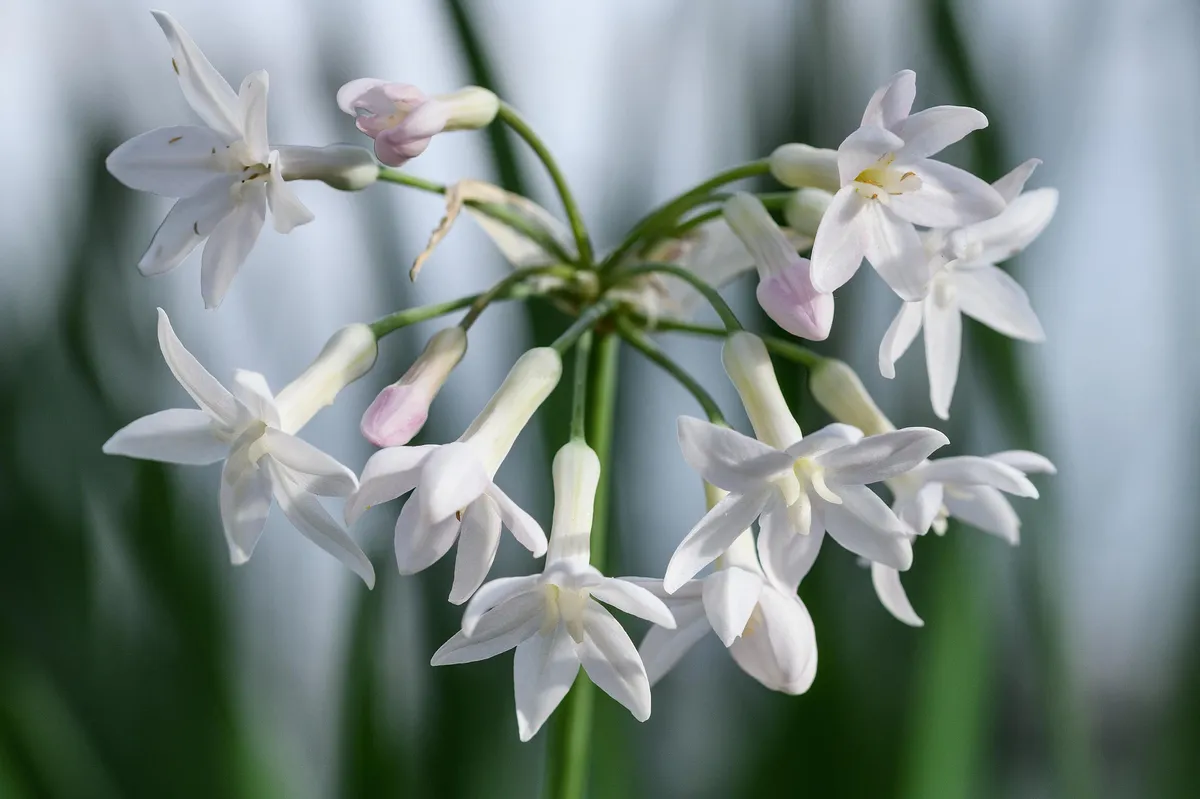
This cultivar has a loose, open flowerhead that is pastel-pink in bud and opens to a glistening white that retains a pink sheen. Flowers are produced in abundance from June until the frosts. The foliage has an attractive, silvery-grey patina. 40cm. RHS H3.
Tulbaghia ‘John May’s Special’
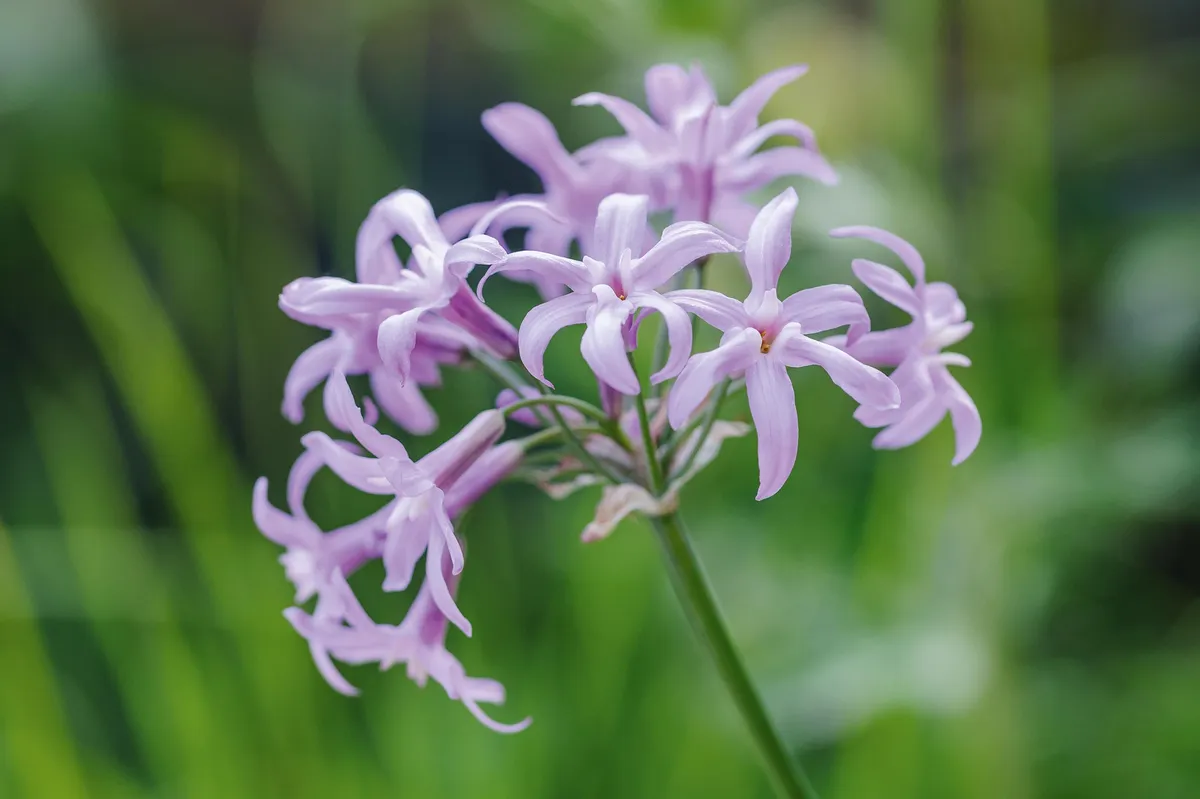
A vigorous hybrid, probably a cross between Tulbaghia violacea and Tulbaghia simmleri, that is reputed to be the hardiest of all the genus. The flowers are about 2cm wide and create and imposing sight. John May raised plants in Dorset before retiring to Scotland. 60cm. RHS H3.
Tulbaghia ‘Fairy Star’
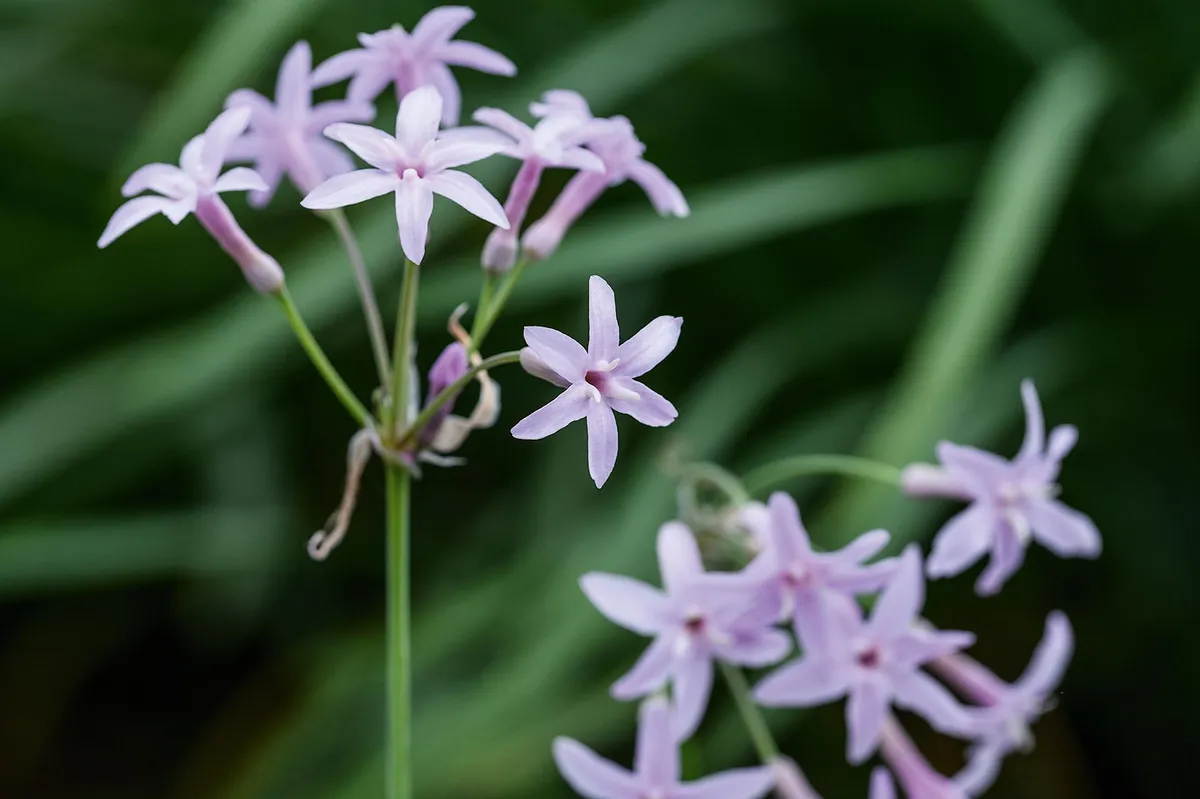
The pale, lilac-mauve flowers have a particularly strong evening scent. First spotted by one of nurseryman Bob Brown’s family members growing among their plants at Cotswold Garden Flowers in Evesham. Flowers from May to October. 35cm. RHS H3.
Tulbaghia violacea ‘Alba’
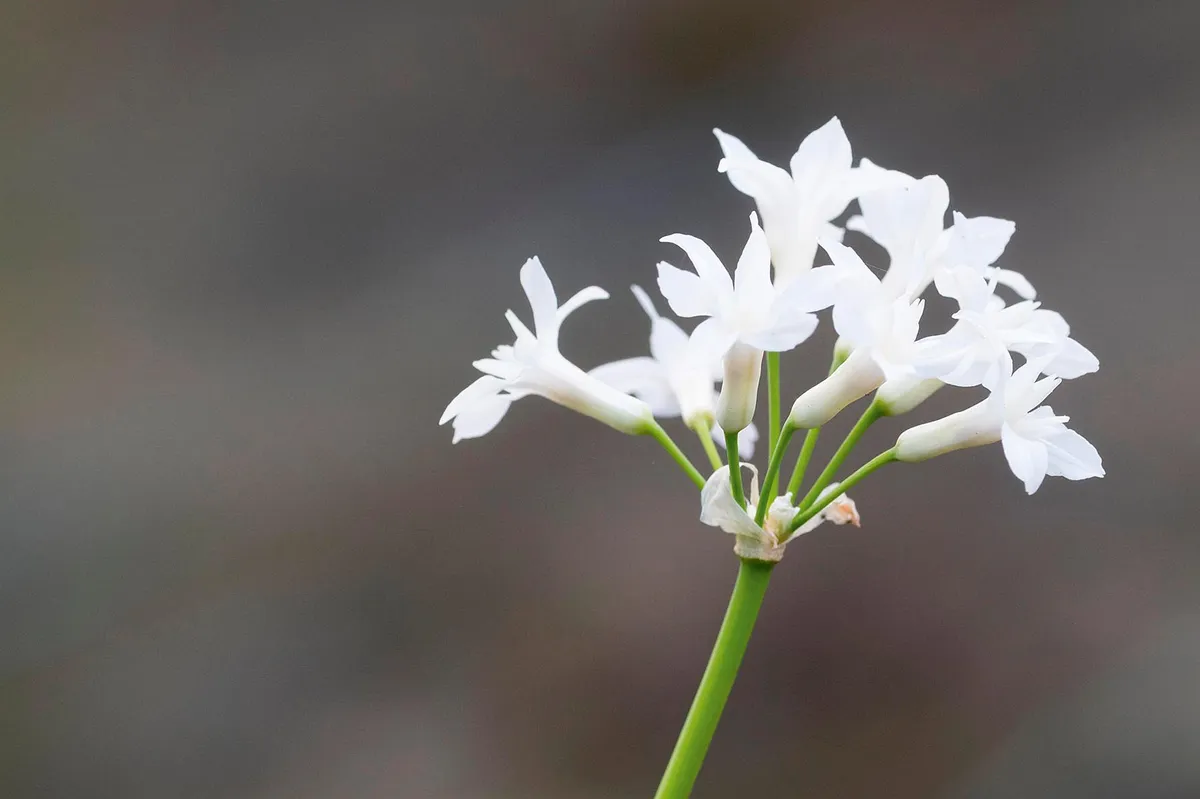
A white form that makes an elegant plant, and is as long-flowering but not as floriferous as the species. The sparkling, white flowers are particularly attractive in the evening light. There are several white-flowered cultivars that are very similar to each other. 35cm. RHS H3.
Tulbaghia ‘Moshoeshoe’

Sharp-eyed Paul Barney of Edulis Nursery noticed this hybrid among a batch of seedlings from a plant sale. The plant forms a tight cluster of small, deep-lilac flowers, each with an ochre-coloured eye. The evening scent is sweet and delicate. 30cm. RHS H3.
Tulbaghia ‘Hoyland Pink Beauty’

A new introduction from National Collection holder Steve Hickman, selected for its abundant flowers – far more, says the breeder, than other hybrids. The pale-pink flowers have a diaphanous quality. Flowers from April to November. 30cm. RHS H3.
Tulbaghia violacea ‘Silver Lace’
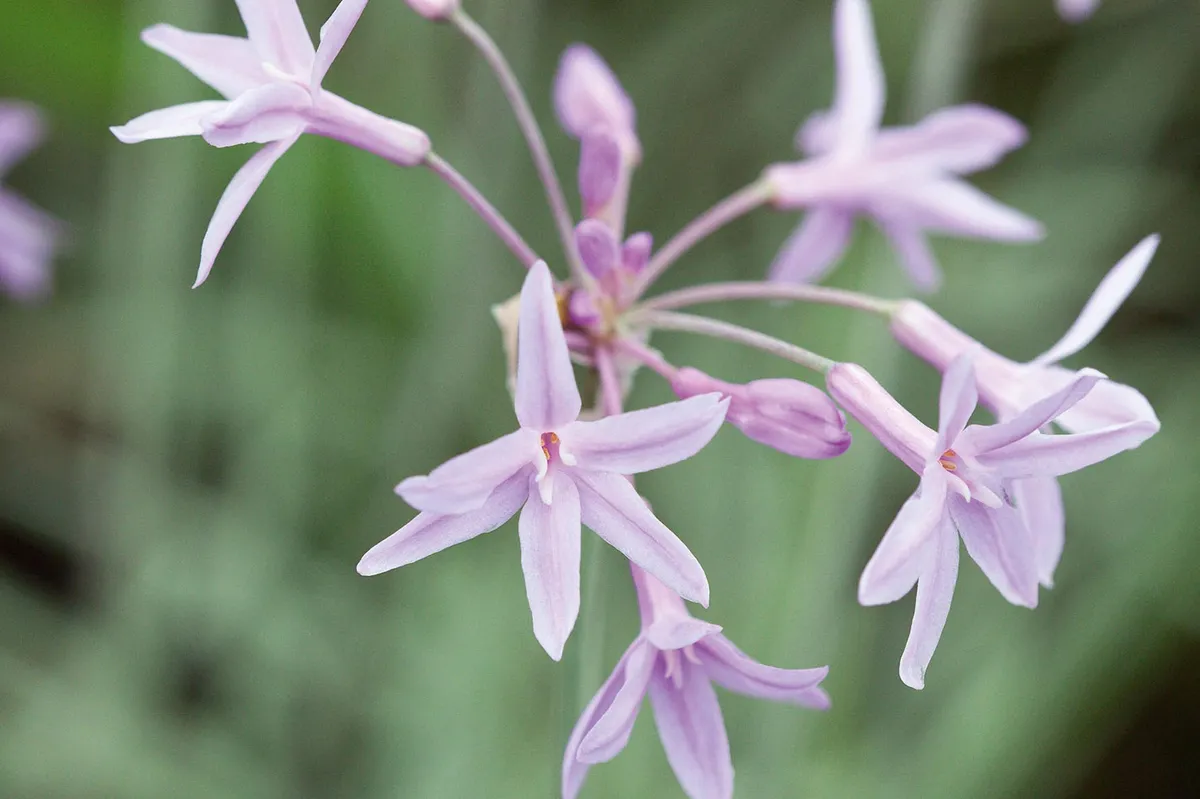
Not as floriferous as the species, but the only widely available form with variegated foliage. The leaves have a central, grey-green stripe and are edged in white. Foliage evergreen in sheltered spots and in mild winters. 50cm. AGM. RHS H3, USDA 7a-10b.
Tulbaghia acutiloba

Unusual but attractive species that has small, greenish flowers with a rust-coloured centre. Flowers emit a strong, sweet perfume that on balmy evenings travels great distances. In the wild it grows on the dry, rocky grasslands of the Eastern Cape. 25cm. RHS H2.
Tulbaghia ‘Hazel’
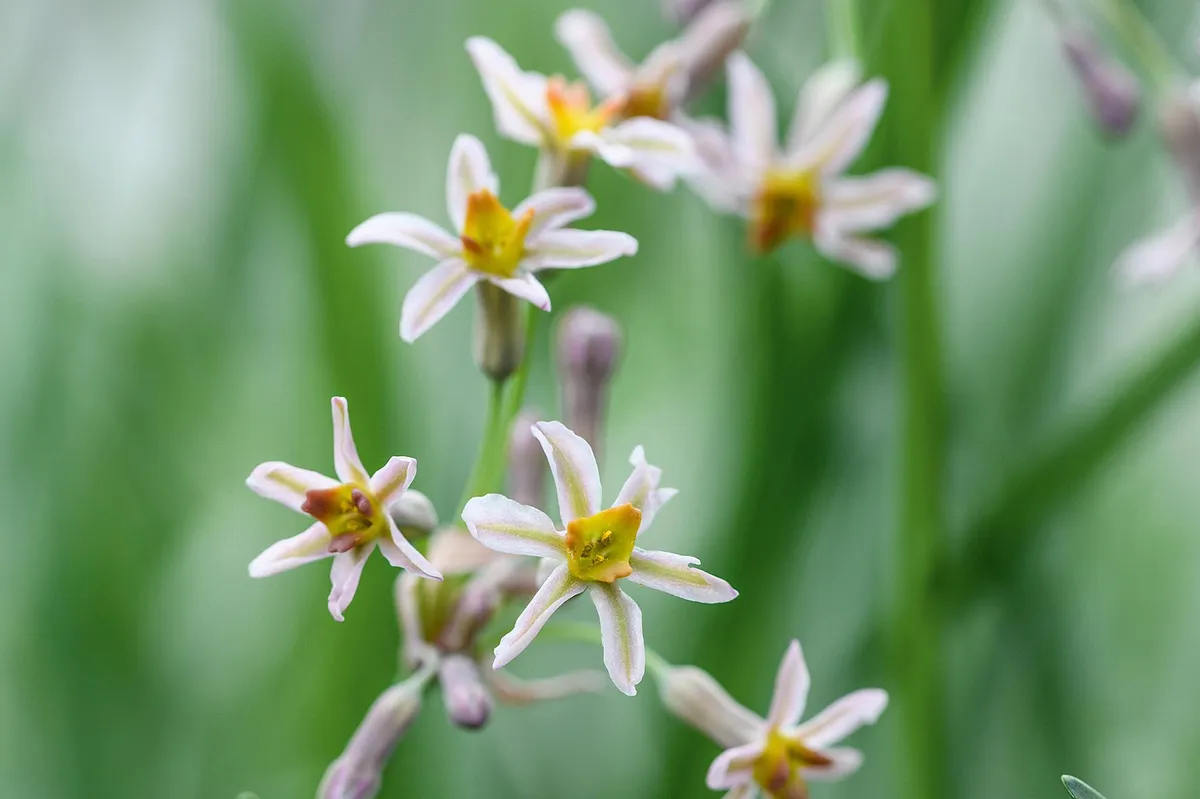
A recent introduction with an unusual colour combination that makes for a discrete but charming plant. The flowers, which have soft-pink, narrow tepals and a hazel-coloured corolla, are grouped in a loose, open flowerhead. 50cm. RHS H3.
Tulbaghia ‘Hoyland Dark Beauty’
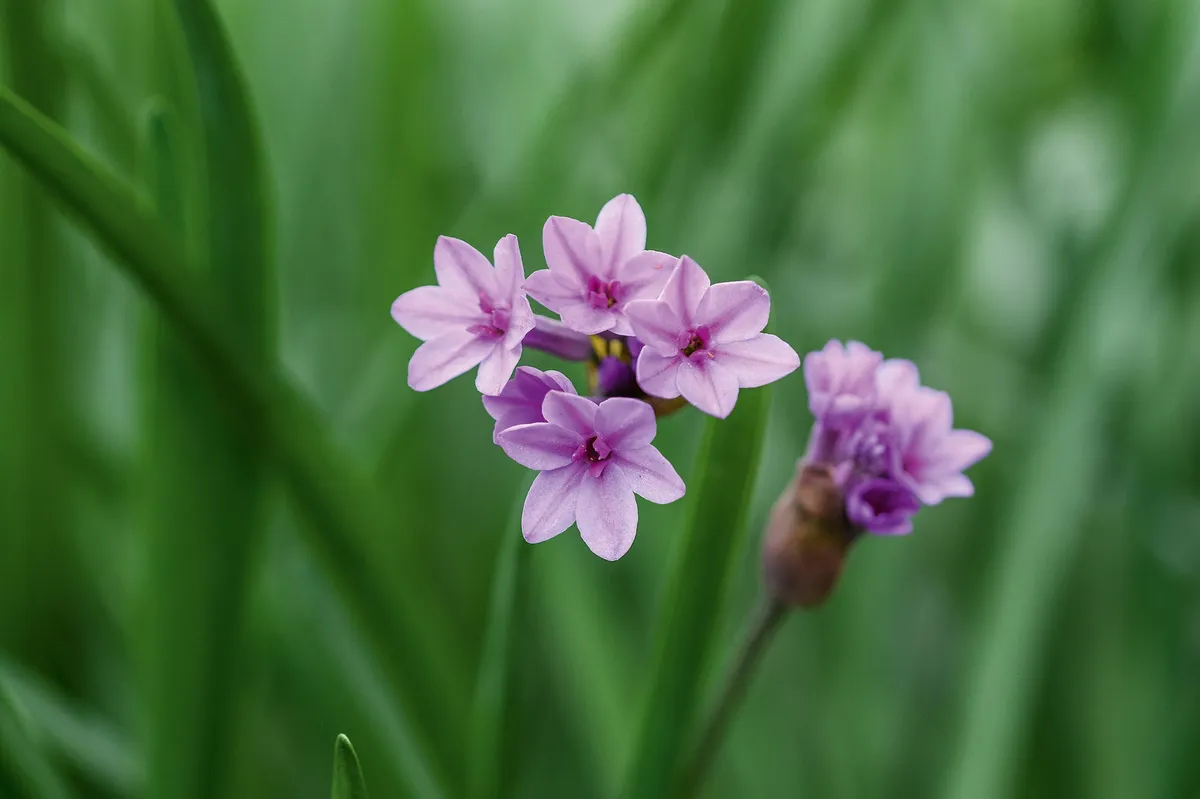
Another recent introduction by Steve Hickman of Hoyland Plant Centre, who thinks the colour is the darkest of any hybrid. The flowers have large tepals with a small corona and form a densely packed, globe-shaped flowerhead. 40cm. RHS H3.
Tulbaghia montana
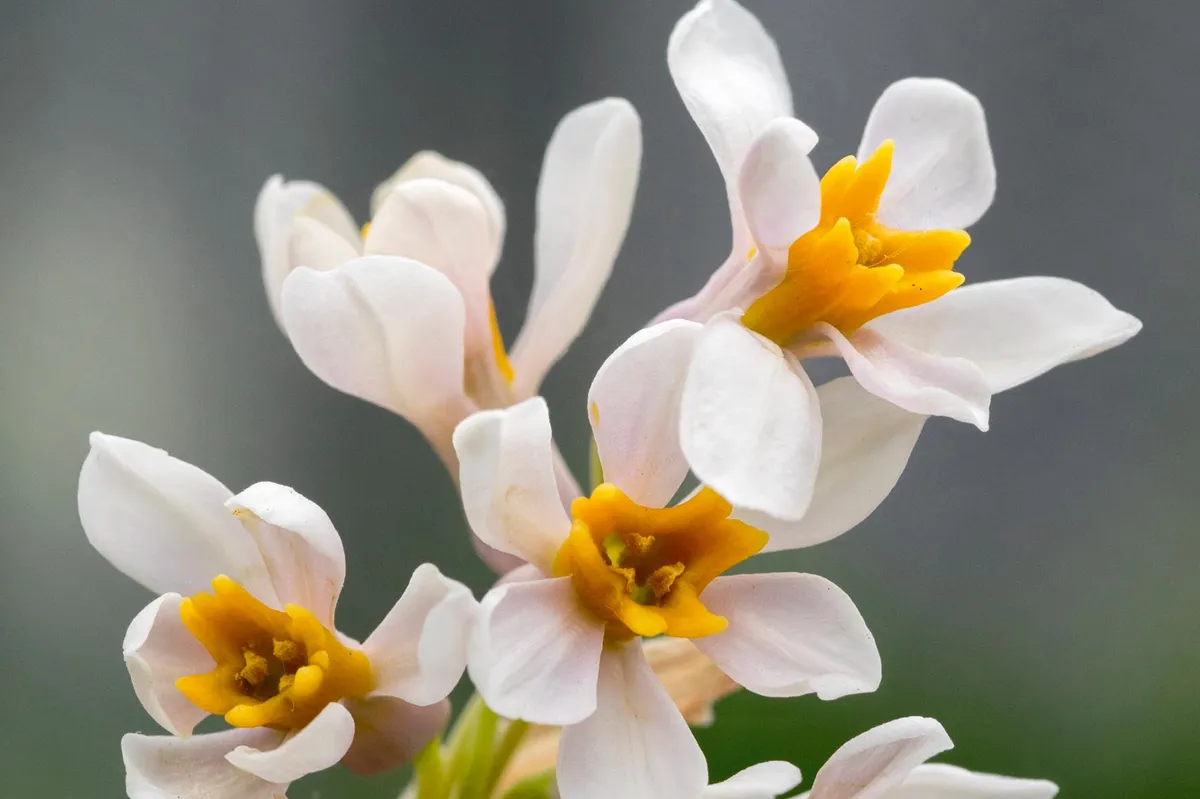
A striking species with narrow, glaucous foliage and nodding, tubular flowers that have a dusky-orange corona. A delicate, honey perfume is released during the day. In the wild this grows on rocky soil in the Drakensberg mountains. Flowers May to July. 25cm. RHS H2.
Tulbaghia ‘Purple Eye’
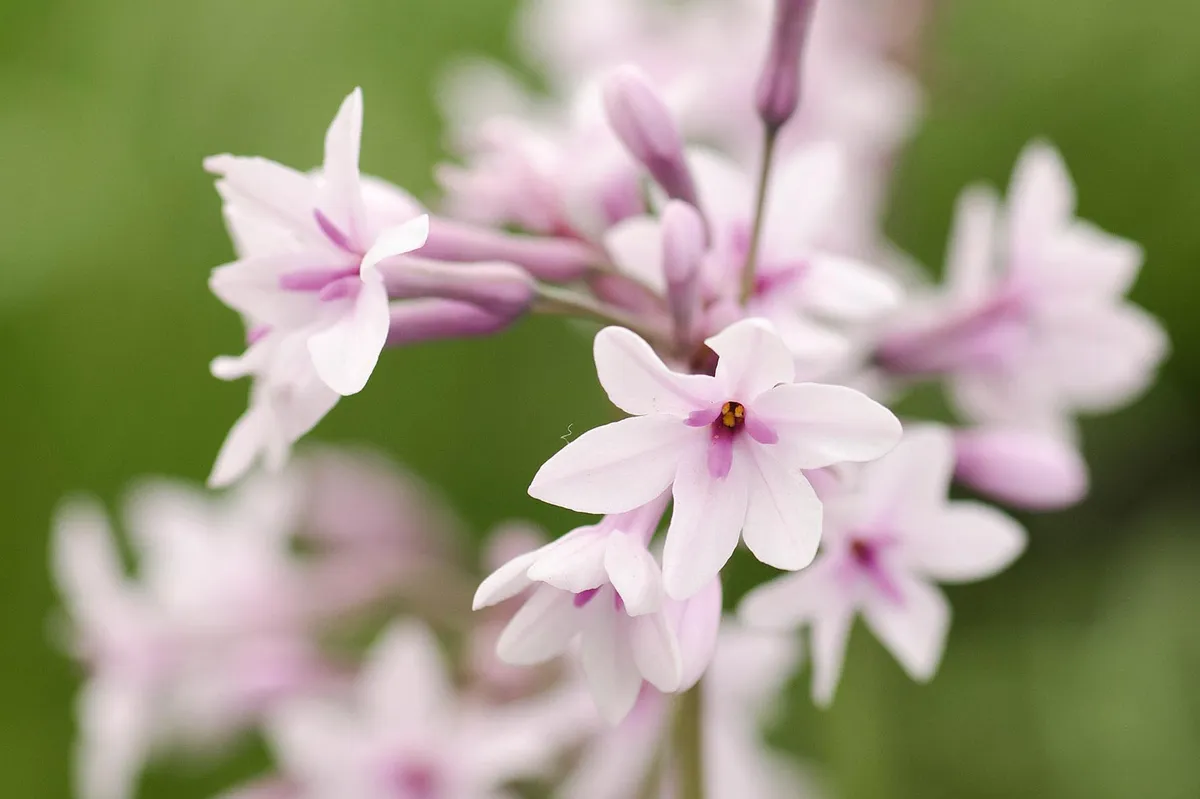
A reflection of the increased interest in the genus, this is another recent hybrid. The mix of pale-pink petals with a darker eye whose colour bleeds into the petals creates an alluring flower. Needs to be overwintered in a greenhouse. 40cm. AGM. RHS H2.
Other uses for Tulbaghia
In its native South Africa Tulbaghia is known as wild garlic and used both as a condiment and in traditional medicine. Water that has been infused with boiled bulbs is used to treat a variety of ailments, mainly bronchial problems. The leaves can be rubbed on the skin and are said to repel insect bites. Like garlic, Tulbaghia has antibacterial properties. Both the leaves and flowers have wide culinary uses. In salads use them sparingly; the leaves are much hotter than chives and the flowers have a strong, peppery taste that can overwhelm some salads.
In parts of KwaZulu-Natal tulbaghias are sometimes planted around houses because the strong smell is said to keep snakes away. I can’t vouch for the efficacy of this. The plant was recommended to me by a South African gardener as a way of repelling moles. This might work in the Cape, but it has no effect on moles in Hertfordshire.

